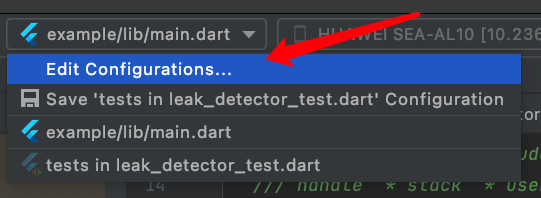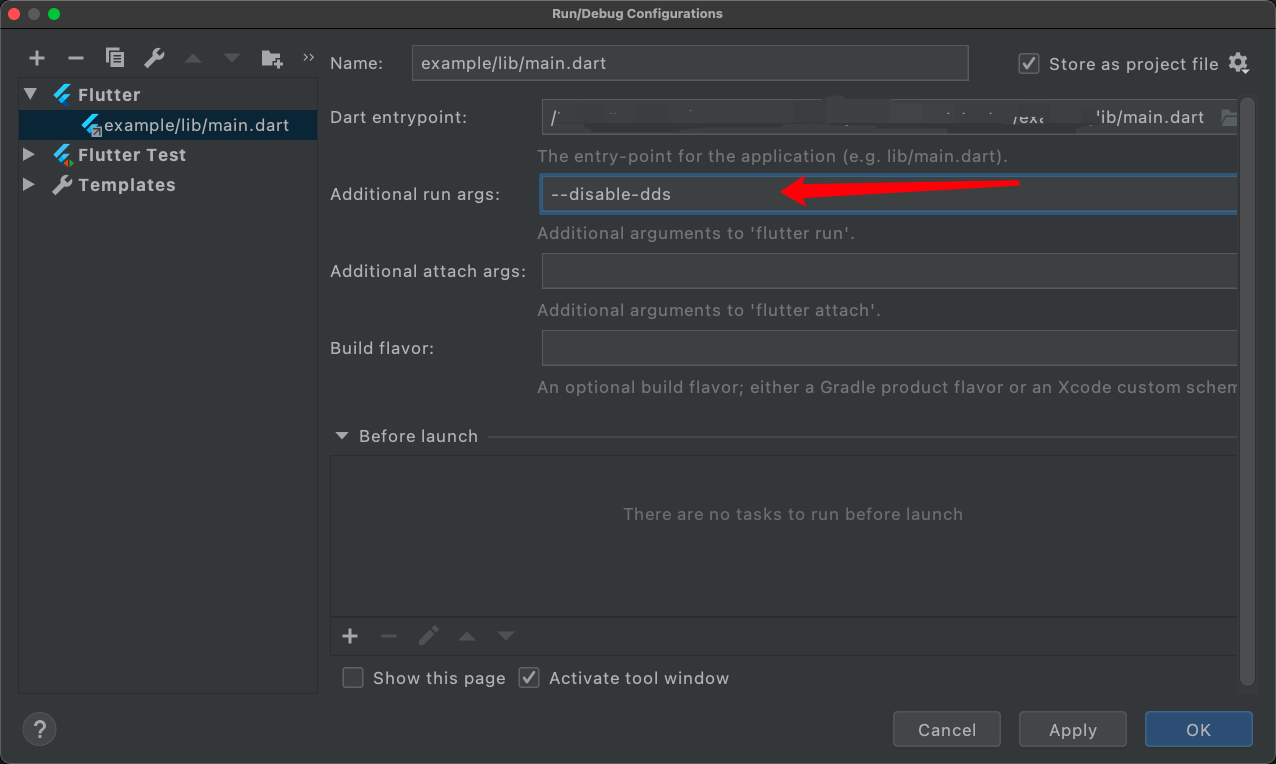flutter Memory leak detection tool
In order to prevent the underlying library vm service from crashing, please call before adding the memory leak detection object:
LeakDetector().init(maxRetainingPath: 300); //maxRetainingPath default is 300Enabling leak detection will reduce performance, and Full GC may drop frames on the page.
Initialized by assert in the plugin, so you don't need to turn it off when build on release mode.
Add LeakNavigatorObserver to navigatorObservers in MaterialApp, it will automatically detect whether there is a memory leak in the page's Widget and its corresponding Element object. If page's Widget is a StatefulWidget, it will also be automatically checked Its corresponding State.
import 'package:leak_detector/leak_detector.dart';
@override
Widget build(BuildContext context) {
return MaterialApp(
navigatorObservers: [
//used the LeakNavigatorObserver
LeakNavigatorObserver(
shouldCheck: (route) {
return route.settings.name != null && route.settings.name != '/';
},
),
],
);
}LeakDetector().onLeakedStream can register your listener, and notify the object's reference chain after detecting a memory leak.
LeakDetector().onEventStream can monitor internal time notifications, such as start Gc, end Gc, etc.
A preview page of the reference chain is provided. You only need to add the following code. Note that the Bulid Context must be able to obtain theNavigatorState:
import 'package:leak_detector/leak_detector.dart';
//show preview page
LeakDetector().onLeakedStream.listen((LeakedInfo info) {
//print to console
info.retainingPath.forEach((node) => print(node));
//show preview page
showLeakedInfoPage(navigatorKey.currentContext, info);
});Preview page display:
It contains the class information of the reference chain node, the referenced attribute information, the source code of the attribute declaration, and the location of the source code (line number: column number).
import 'package:leak_detector/leak_detector.dart';
getLeakedRecording().then((List<LeakedInfo> infoList) {
showLeakedInfoListPage(navigatorKey.currentContext, infoList);
});The VM service allows for an extended feature set via the Dart Development Service (DDS) that forward all core VM service RPCs described in this document to the true VM service.
So when we connect to the computer to run, the DDS on the computer will first connect to the vm_service on our mobile end, causing our leak_detector plugin to fail to connect to the vm_service again.
There are two solutions:
-
After the
runis complete, disconnect from the computer, and then it is best to restart the app.If the completed test package is installed on the mobile phone, the above problem does not exist, so this method is suitable for use by testers.
-
Add the
--disable-ddsparameter afterflutter runto turn off theDDS. After testing, this will not cause any impact on debuggingIt can be configured as follows in
Android Studio.
After Pull Request #80900 is merged, --disable-dds was renamed to --no-dds





